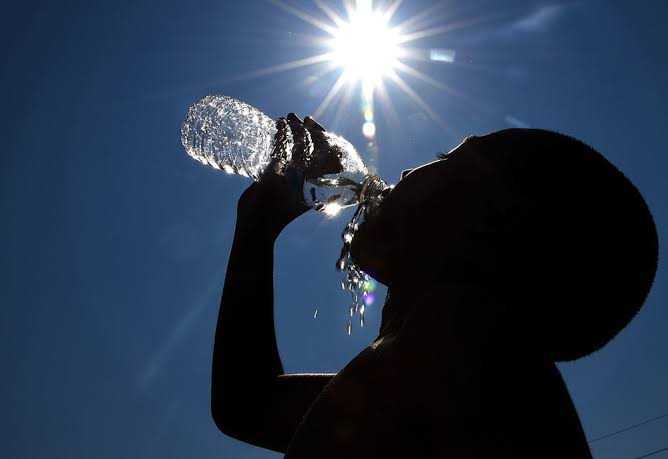
Highest June temperatures in decades
Amid an intense heatwave forecasted to persist until Saturday, Kashmir is experiencing a dramatic and unprecedented rise in maximum temperatures, with several weather stations across the Valley surpassing decades-old records.
Srinagar, the summer capital of Jammu and Kashmir, recorded a maximum temperature of 35.2°C—the hottest June day in 20 years, exceeding the previous record set on June 25, 2005. Independent weather forecaster Faizan Arif Keng confirmed this, adding that the all-time highest June temperature in Srinagar remains 36.5°C, recorded on June 29, 1978.
In Qazigund, the mercury rose to 34.7°C, marking the highest June temperature in 37 years and the third-highest ever for the region. The second-highest was 35.3°C on June 27, 1988, and the all-time peak stands at 35.7°C, recorded a day earlier in the same year.
Kokernag in south Kashmir also witnessed a rare temperature spike, logging 33.8°C, the second-highest June temperature in 27 years, close to its record of 34.9°C set on June 25, 2005.
Independent weather forecaster Adil Maqbool predicted that Srinagar could see temperatures climbing even higher, potentially touching 35.5°C or 36°C in the coming days. He added that mostly dry and hot weather would continue to dominate across the region until June 21.
Elsewhere in Kashmir, Pahalgam recorded 29.6°C, Kupwara registered 33.1°C, and Gulmarg, the Valley’s traditional summer retreat, remained the coolest at 25.9°C, still over 3°C above the seasonal average.
In contrast, some parts of the Jammu division recorded below-normal temperatures, including Jammu city and Katra, where maximums were 36.5°C and 33.1°C, respectively. Banihal, Bhaderwah, and Batote recorded 30.6°C, 31.6°C, and 28.2°C.
⚠️ Weather Forecast and Advisory
According to Dr Mukhtar Ahmad, Director of the Meteorological Department, generally dry and hot conditions will persist until Friday, followed by a shift in the weather pattern:
June 21–22: Cloudy skies with intermittent rain and thundershowers at several locations, especially in the Jammu division, with a risk of moderate to heavy rainfall, flash floods, landslides, and shooting stones in vulnerable areas.
June 23–24: Dry conditions are expected, with brief rain spells at isolated places.
June 25–27: Overcast skies with the possibility of light to moderate rain and thundershowers across many areas.
The MeT Department has issued an advisory to farmers, recommending that they complete farm operations by June 20 in anticipation of wet conditions.
As Kashmir braces for two more days of punishing heat followed by turbulent weather, officials and residents alike are urged to take precautions, particularly in areas prone to flooding and landslides.
Highest June temperatures in decades
Amid an intense heatwave forecasted to persist until Saturday, Kashmir is experiencing a dramatic and unprecedented rise in maximum temperatures, with several weather stations across the Valley surpassing decades-old records.
Srinagar, the summer capital of Jammu and Kashmir, recorded a maximum temperature of 35.2°C—the hottest June day in 20 years, exceeding the previous record set on June 25, 2005. Independent weather forecaster Faizan Arif Keng confirmed this, adding that the all-time highest June temperature in Srinagar remains 36.5°C, recorded on June 29, 1978.
In Qazigund, the mercury rose to 34.7°C, marking the highest June temperature in 37 years and the third-highest ever for the region. The second-highest was 35.3°C on June 27, 1988, and the all-time peak stands at 35.7°C, recorded a day earlier in the same year.
Kokernag in south Kashmir also witnessed a rare temperature spike, logging 33.8°C, the second-highest June temperature in 27 years, close to its record of 34.9°C set on June 25, 2005.
Independent weather forecaster Adil Maqbool predicted that Srinagar could see temperatures climbing even higher, potentially touching 35.5°C or 36°C in the coming days. He added that mostly dry and hot weather would continue to dominate across the region until June 21.
Elsewhere in Kashmir, Pahalgam recorded 29.6°C, Kupwara registered 33.1°C, and Gulmarg, the Valley’s traditional summer retreat, remained the coolest at 25.9°C, still over 3°C above the seasonal average.
In contrast, some parts of the Jammu division recorded below-normal temperatures, including Jammu city and Katra, where maximums were 36.5°C and 33.1°C, respectively. Banihal, Bhaderwah, and Batote recorded 30.6°C, 31.6°C, and 28.2°C.
⚠️ Weather Forecast and Advisory
According to Dr Mukhtar Ahmad, Director of the Meteorological Department, generally dry and hot conditions will persist until Friday, followed by a shift in the weather pattern:
June 21–22: Cloudy skies with intermittent rain and thundershowers at several locations, especially in the Jammu division, with a risk of moderate to heavy rainfall, flash floods, landslides, and shooting stones in vulnerable areas.
June 23–24: Dry conditions are expected, with brief rain spells at isolated places.
June 25–27: Overcast skies with the possibility of light to moderate rain and thundershowers across many areas.
The MeT Department has issued an advisory to farmers, recommending that they complete farm operations by June 20 in anticipation of wet conditions.
As Kashmir braces for two more days of punishing heat followed by turbulent weather, officials and residents alike are urged to take precautions, particularly in areas prone to flooding and landslides.
© Copyright 2023 brighterkashmir.com All Rights Reserved. Quantum Technologies